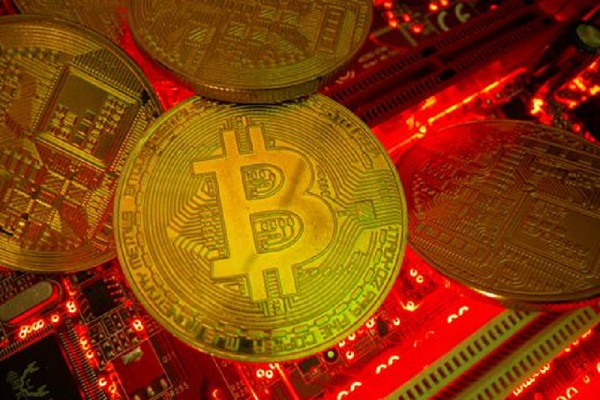As inflation soars, everyone is looking for any kind of haven they can find so they don’t lose money. Although many argue otherwise, cryptocurrency is often considered a store of value immune to inflation.
This is primarily due to its decentralized status, as it is not tied to the value of physical commodities. However, understanding that each cryptocurrency is distinct, and some are inflationary by default, adds a further layer of complexity to the equation.
Being the most valuable currency in the market, Bitcoin is usually the go-to for investors who want to escape inflation by investing in crypto. But recent market trends have demonstrated that the original cryptocurrency doesn’t seem to fight well against inflation.
The question is, why?
Why Bitcoin Is Considered an Inflation-Hedge
Simply put, inflation occurs when a currency’s value declines over time, causing an accompanying rise in the cost of consumer products and services. Therefore, investors may be more likely to put their savings into cryptocurrency if the value of their fiat currency is expected to decrease rapidly due to inflation.
Bitcoin provides such investors with a relatively stable option. Bitcoin’s economics are intricate, but the digital currency has several built-in features that might make it maintain value over time. It is immune to monetary policy interventions like interest rate changes by governments or any other body.
The common stance is that Bitcoin, like gold and other stores of value, will increase in value during times of uncertainty. Recently, experts have argued against this view. Many cite the beginning of the COVID epidemic as an example when the price of Bitcoin dropped rapidly with the stock market.
Compared to gold, Bitcoin is easier to store and transfer. This is because investors only require an internet connection. In addition, one of the characteristics that makes it a good store of value is its scarcity. Bitcoin supply is capped at 21 million, although 19 million bitcoins have been mined thus far. Interestingly, Bitcoin Gold, the user-friendly Bitcoin alternative, is predicted to perform even better than Bitcoin in 2022.
Inflation in the Bitcoin Market
Inflation occurs in cryptocurrency markets, including the Bitcoin market. As explained earlier, as more bitcoins are mined, their value decreases. It’s similar to how the value of gold decreases when more becomes available.
However, unlike fiat currencies, inflation rates in the Bitcoin market decline over time. This is particularly because Bitcoin halving reduces the mining reward by half every four years. If you’re familiar with how Bitcoin mining works, you should also have good knowledge of Bitcoin halving.
Once every ten minutes, the blockchain network receives 6.25 new bitcoins due to a new “block” that has been mined. The mining reward decreases as more bitcoins are mined. As a result of halving, the mining reward will decrease from the current 6.25 BTC in 2022 to 3.125 BTC in 2024. Subsequently, it will decrease every four years until all Bitcoin has been mined.
Bitcoin’s yearly inflation rates are often not a big area of worry for investors so long as Bitcoin’s value rises versus fiat currencies. However, the performance of several other cryptocurrencies may vary. Since Bitcoin is the top player in the market, many altcoin investors follow its developments closely.
Bitcoin Future and Inflation
Inflation is not the true reason for the current drop in Bitcoin and general cryptocurrency prices. Rather, it is the result of higher interest rates meant to drain the fiat market of its excess liquidity, curb inflation, and bolster the U.S. dollar.
The cryptocurrency market as a whole, including Bitcoin, has been in a downtrend since interest rate rises were first implemented in March 2022. Bitcoin has yet to stand the test of time to demonstrate if it is an inflation hedge. So, in simple words, investors don’t just trust Bitcoin enough following these rate rises.
Although cryptocurrencies like Bitcoin are becoming scarcer, their value is still driven mostly by market sentiment. While there has been news about certain businesses accepting Bitcoin as payment, widespread adoption and stability have not yet materialized.
If you’d rather not invest in Bitcoin against inflation, you can consider stablecoins. Stablecoins, backed by fiat currency, are an example of a low-volatility cryptocurrency suitable for long-term investments.
However, these coins may experience value erosion over time, although not directly affected by inflation. When the value of the reserve currency drops, the value of the stablecoins drops correspondingly.
On the Flipside
- Bitcoin could still prove to be a good safeguard against inflation due to its fixed supply. No more than 21 million bitcoins can be mined, so its inflation risk is forever limited.
Why You Should Care
Bitcoin’s price has dropped dramatically this year as the world struggles with inflation. Since the crash that wiped off about $2 trillion from the global crypto market from its peak in November, Bitcoin has been trading between $18,000 and $25,000, with a low of $16,000 and a high of $25,000.
Read more about Bitcoin inflation fears and sell-offs here:
Inflation Fears Intensify Sell-Off, Forcing Bitcoin Below $27,000
Learn how meme coins have been proposed in countries with high inflation rates:
Turkey’s Minister of Economy Meets with SHIB Community amid Historic Inflation
